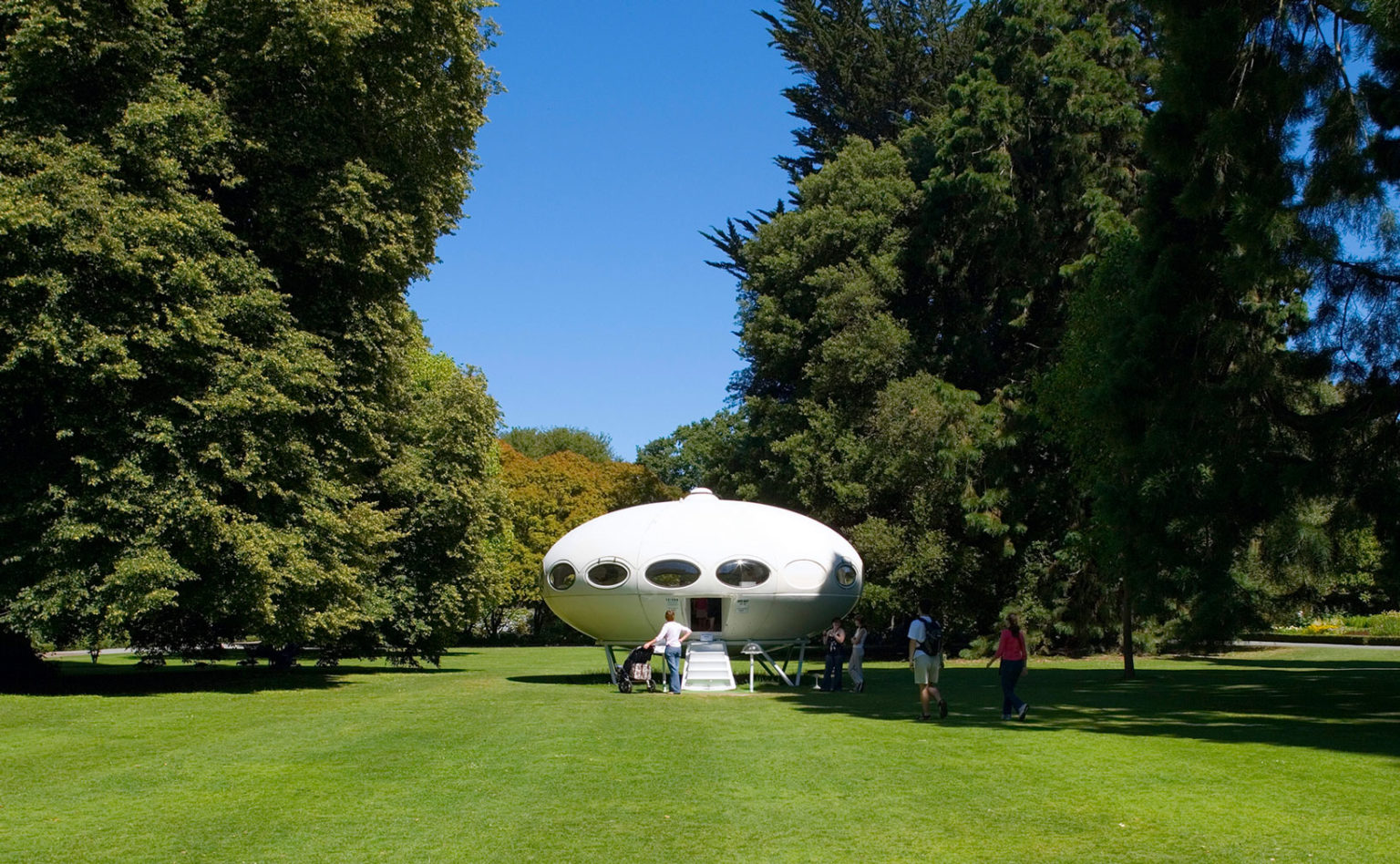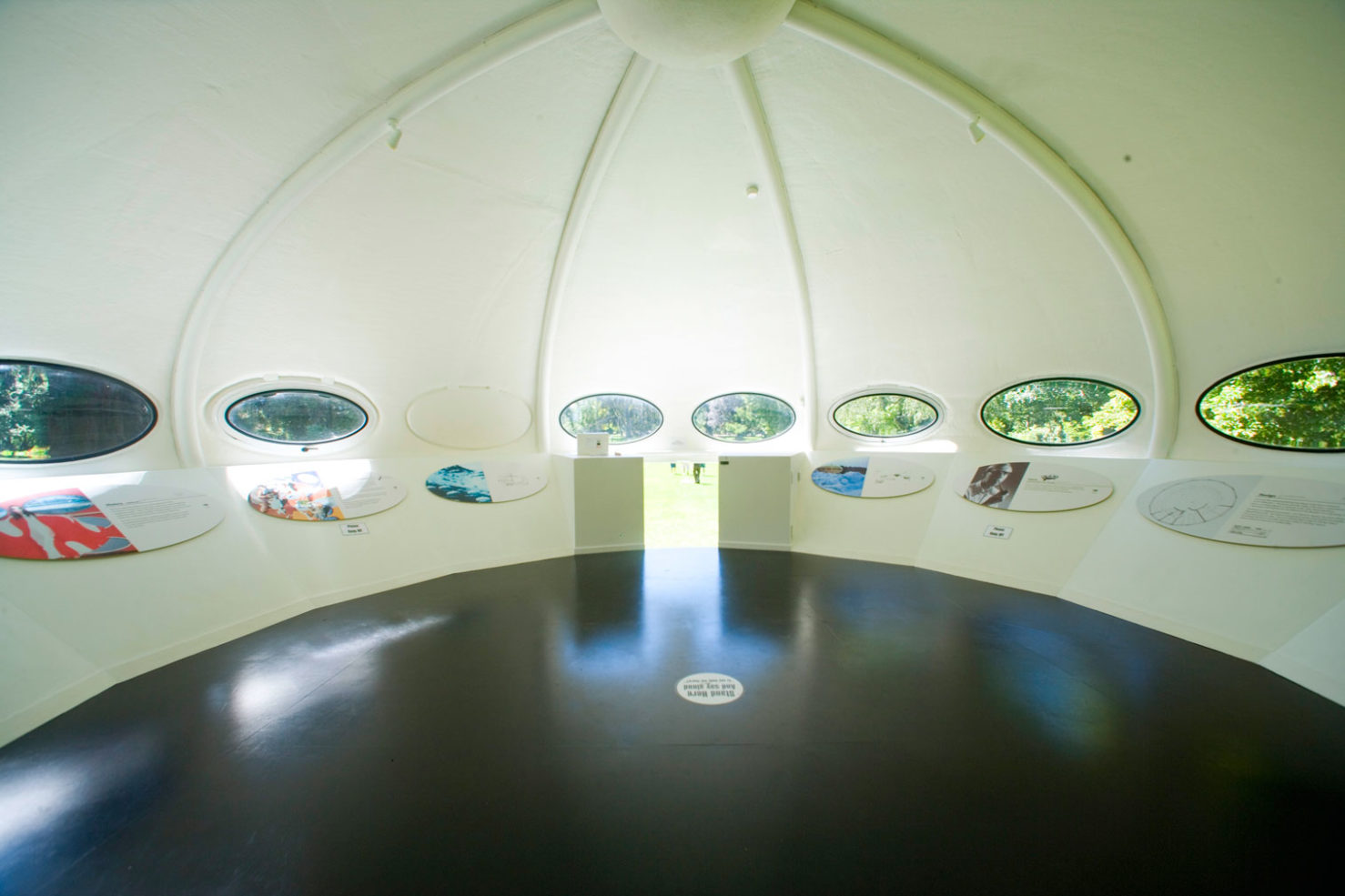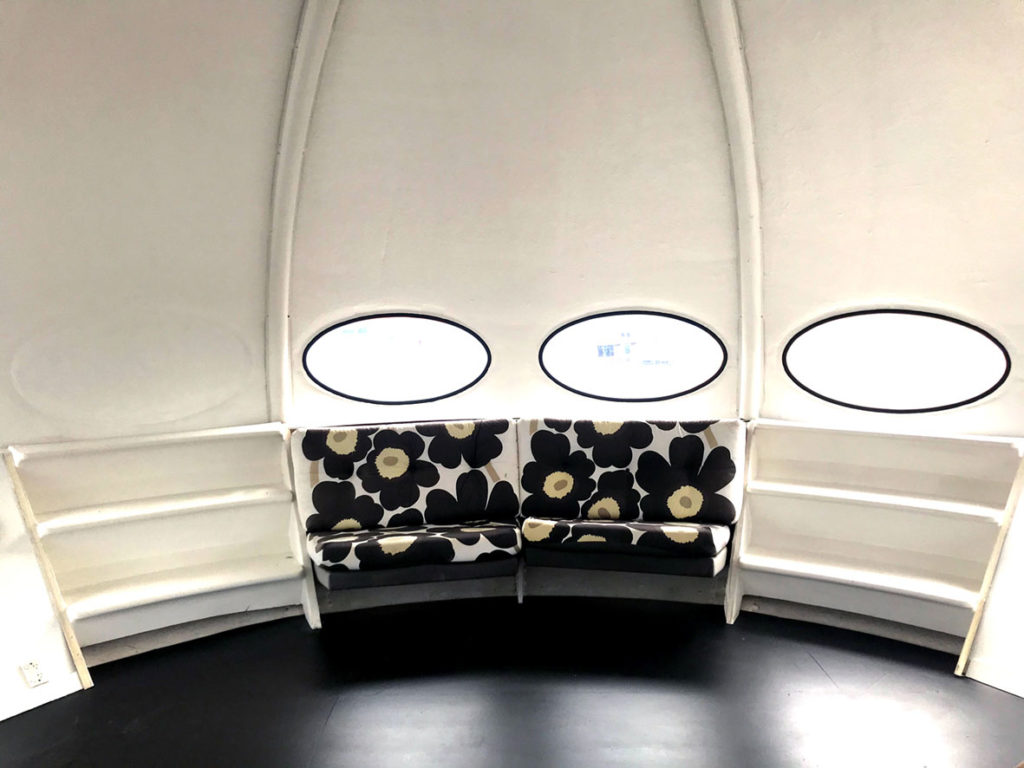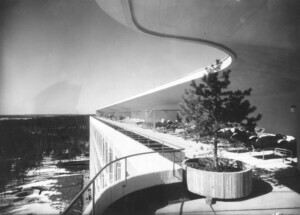Arguably the most famous—or at the very least, visible—of the ten surviving Futuro houses in New Zealand has been unearthed from storage and is “ready for lift off” in the direction of the highest bidder no matter his or her location.
Roughly 60 of the less than 100 Futuro Houses produced during the 1960s and early 1970s survive today. The New Zealand versions were created for the 1974 Commonwealth Games in Christchurch as pop-up banking centers. Designed by Finnish architect Matti Suurronen, the prefabricated fiberglass-reinforced polyester plastic dwellings were originally envisioned by Suurronen to be used as portable avant-garde ski chalets in Finland. However, during their short-lived heyday, Futuro houses were also produced outside of Finland, including in the United States, and used for a variety of other purposes. New Jersey, of all places, was the epicenter of the stateside Futuro craze—a craze that died off when production of the plastic structures halted in 1973 and interest in investing in small, hatch door-accessible dwellings resembling alien spacecraft waned. In addition to New Jersey, surviving U.S. Futuros can be found in a disparate number of locations, including Joshua Tree, California; Milton, Delaware; Frisco, North Carolina; and Pensacola, Florida. There’s a rather singular Futuro in Tampa.

In the years since their production was discontinued, numerous original Futuro houses have been demolished or fallen into disrepair, paving the way for international conservation efforts as lovers of space age kitsch clamor to save surviving examples of this flying saucer–shaped architectural curiosity. Some have been preserved and are on display at museums, including Finland’s Exhibition Centre WeeGee, where visitors can tour the first-ever mass-produced Futuro.
As Justin McGuirk wrote in 2012 for The Guardian:
“What remains intriguing about Futuro, however, is that it’s the closest housing ever came to product design. In the 1960s, the mechanisation of the domestic interior, particularly the kitchen, was in full force, as we accumulated labour-saving gadgets like washing machines and blenders. Suuronen’s plastic capsule had the moulded integrity of a mass-produced consumer product, it was the house-as-gadget, a device for the nomadic lifestyle.”
Back in New Zealand, a Futuro house now up for sale. It was identified as the “New Brighton Futuro” in an authoritative 1998 book on the utopian prefab dwellings and is somewhat of a nationally famous specimen as it has previously been exhibited at the Christchurch Botanical Gardens and in the city’s Cathedral Square. “It has likely had the most public viewings of any Futuro in our country and as such, could be considered a celebrity!” exclaims the home’s dedicated listing website.

The easily adaptable and transportable structure (thus the original intended use of Futuros as ski retreats in rugged and hard to access locales) weighs between 5,500 and 7,000 pounds, measures just over 26-feet in diameter, and has undergone recent partial renovations. While the interior has been cleared to serve as a blank canvas, it is outfitted with Marimekko sofas and informative plaques that tell the far-out Futuro story. Also included in the sale are some fiberglass furnishings and the original garage door-style opener for the hatch that “cannot be guaranteed operational.”
“Provenance for this Futuro is comprehensive,” reads the sale website. “Valuable documents are included covering a range of history and topics that invariably inform and educate the new owner, potentially minimising unseen expense that could occur during the process of removal and re-installation.”

The website goes on to advise that potential owners should have their own cradle for the Futuro house ready to go when their new purchase lands, which “allows a creative opportunity for the new owner to design something spectacular for the new resting place.” Relocation estimates are available for “nearly any part of the planet” and will be provided to serious bidders.











